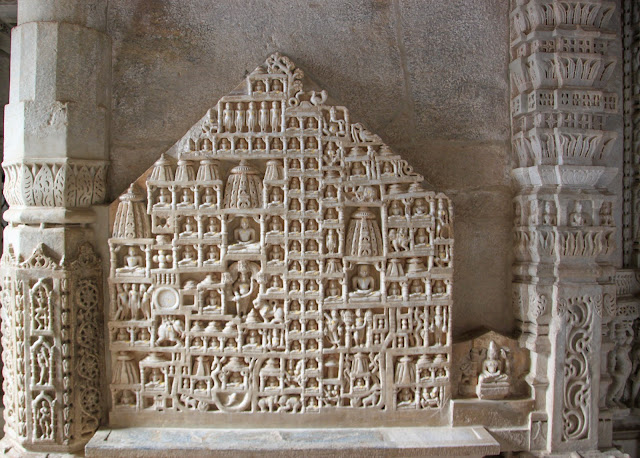A lovely little hotel but unfortunately we arrived at 10:30pm and had to leave 8:30am so not much time to enjoy it.
On leaving Jodhpur, we first visited the beautiful, elaborately carved, 19th century mausoleum Jaswant Thada, built from white marble.
He looked so delighted, but I have no idea why!
Then we moved on to the massive red
sandstone Mehrangarh Fort, which stands high on the hillside overlooking
the city. Built around 1459 it is one of the largest forts in
India.
The detail on the buildings was amazing.
It had an amazing collection of sedan chairs.
And the Gold Chair for special occasions.
We were also treated to a turban dressing demonstration
As usual the ladies were cleaning away every particle of dust.
If only this lady had uncovered her eyes, she'd have noticed she was poking her colleague in the face with her mop handle.
There are 7 gates guarding the fort’s entrance and to the left of
the innermost gate, Loha Pol, or “Iron Gate”, are 15 small handprints left by
the wives of the maharaja before they immolated themselves on his funeral pyre.
Known as sati marks, the gilded handprints most likely date back to the 1843
death of Maharaja Man Singh.

The custom of sati has ancient origins in the Hindu faith, and was
practiced widely in the Rajasthan area. Wives were dressed in wedding finery to
join their husbands in death as an act of devotion and faith, usually within a
day of his death. In 1731, following the death of Maharaja Ajit Singh six wives
and fifty-eight concubines placed themselves in the funeral fires. The practice
horrified early western colonials, and it was outlawed by the British in 1829,
but was not officially condemned by the Indian government until 1987 when they
passed the Commission of Sati (Prevention) Act, in the wake of a well
publicized sati death. The last recorded case of sati in Jodhpur was in 1953.
A couple more characters around the fort.
Jodhpur is also known as the Blue City due to the number of painted houses around the fort

Our last stop of the day was to the breathtaking AdinathTemple at Ranakpur. Set in a secluded, wooded valley, this 15th century white marble temple is one of the 5 holiest places in the Jain religion.
Each of its 1,444 pillars is carved with different patterns of floral motifs
Jainism was founded in the 6th century BC and is based on a doctrine of non violence towards all living beings. Jains are strict vegetarians and the more orthodox ones cover their mouths to avoid inadvertently swallowing living organisms.
Nearby was a troop of monkeys, including this mother feeding her tiny baby.


































